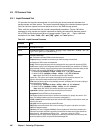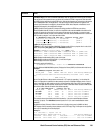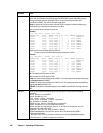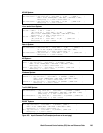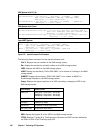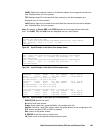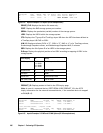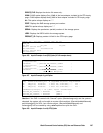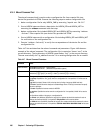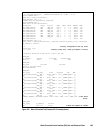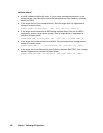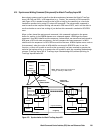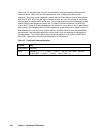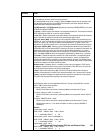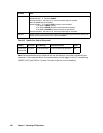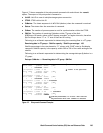
288 Chapter 4 Performing CCI Operations
4.14.2 Mkconf Command Tool
The mkconf command tool is used to make a configuration file from a special file (raw
device file) provided via STDIN. Execute the following steps to make a configuration file:
1.
Make a configuration file for only HORCM_CMD by executing “inqraid -sort -CM -CLI”.
2.
Start a HORCM instance without a description for HORCM_DEV and HORCM_INST for
executing the raidscan command with next step.
3.
Make a configuration file included HORCM_DEV and HORCM_INST by executing “raidscan
-find conf” from a special file (raw device file) provided via STDIN.
4.
Start a HORCM instance with a configuration file including HORCM_DEV and HORCM_INST
for verification of the configuration file.
5.
Execute “raidscan -find verify” to verify the correspondence of the device file and the
configuration file.
Table 4.47 lists and describes the mkconf command
and parameters. Figure 4.69 shows an
example of the mkconf command. The configuration file is created as “horcm*.conf” in the
current directory. The log directory of HORCM is specified as “log*” in the current directory.
The user must modify the “ip_address & service” of an existing configuration file as needed.
Table 4.47 Mkconf Command Parameters
Parameter Value
Command Name /HORCM/usr/bin/mkconf.sh (UNIX systems)
\HORCM\Tool\mkconf.exe (Windows and OpenVMS
®
systems)
Format mkconf.sh [ -g[g] <group> [-m <mu#>] [-i <inst#>] [-s <service>] [-a] ]
mkconf.exe [ -g[g] <group> [-m <mu#>] [-i <inst#>] [-s <service>] [-a] [-c <drive#>] ]
Options No argument: No option displays Help/Usage.
-g <group>: Specifies the “dev_group” name for a configuration file. If not specified,
‘VG’ will be used as
default.
-gg (9900V and later): Shows a LUN on the host view by finding a host group (9900V and later).
-m <mu#>: Specifies the mirror descriptor for ShadowImage volume. TrueCopy volume does not specify
the mirror descriptor.
-i <inst#>: Specifies the instance number for HORCM.
-s <service>: Specifies the service name for a configuration file. If not specified,
‘52323’ will be used as
default.
-a: Specifies an addition of the group to a configuration file.
-c <drive#> (only Windows): Specifies the range of drive numbers that should be examined in order to
discover the command devices. If not specified,
‘$PhysicalDrive’ will be used as default.
-c <DKA#-#> (only OpenVMS
®
): Specifies the range of drive numbers that should be examined in order to
discover the command devices. If not specified,
‘$1$DGA0-10000 DKA0-10000 DGA0-10000’ will be used
as default.



